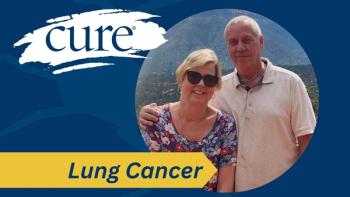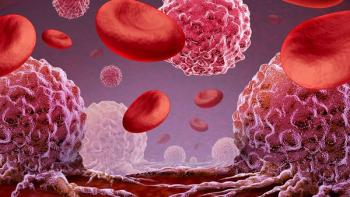
Gazyva With Chemotherapy Shows Promise for Chronic Lymphocytic Leukemia
Final analysis of a phase 3 study demonstrates a tolerable toxicity profile for Gazvya in combination with chemotherapy for patients with ether first-line or relapsed/refractory chronic lymphocytic leukemia.
Gazyva (obinutuzumab) plus chemotherapy may be a promising treatment option for patients with either first-line or relapsed/refractory chronic lymphocytic leukemia, according to data published in the British Journal of Hematology.
“Recently the U.S. Food and Drug Administration approved (Gazyva) plus ibrutinib, venetoclax and aclabrutinib,” the study authors wrote in the study’s introduction. “Despite these advances, chemoimmunotherapy is still considered to have an important role in (chronic lymphocytic leukemia) treatment, especially in patients with mutated IGHV, who reportedly receive sustained benefit from chemoimmunotherapy. It, therefore, remains important to further investigate the safety of chemoimmunotherapy and to define the subgroups that derive particular benefit.”
Previously, the manageable toxicity profile of Gazyva alone or in combination with chemotherapy was reported from this study in patients with relapsed/refractory chronic lymphocytic leukemia. This is the final analysis reporting on safety and efficacy of these two treatment options.
The phase 3 study included patients with relapsed/refractory chronic lymphocytic leukemia (341 patients) and patients with first-line chronic lymphocytic leukemia (630 patients). Patients received either 1,000 milligrams of Gazyva alone, or in combination with chemotherapy, (fludarabine and cyclophosphamide for fit patients, chlorambucil for non-fit patients and bendamustine for any patients). A total of 789 patients (81.2%) finished treatment, and the safety population included 971 patients.
In the safety population, 98.6% of patients with first-line chronic lymphocytic leukemia and 98.5% of those with relapsed/refractory chronic lymphocytic leukemia experienced a side effect considered mild or worse. In addition, 82.7% from the first-line group and 84.5% from the relapsed/refractory group reported side effects categorized as severe or worse.
The most common severe or life-threatening side effects were a low white blood cell count (50.5% of patients in the first-line group and 53.4% in the refractory/relapsed group), low blood platelet count (14.6% and 19.1%, respectively), anemia (8.9% and 12%) and pneumonia (8.4% and 15.2%).
Median progression-free survival (length of time during or after treatment that a patient lives with the cancer without disease progression) was not met in the first-line group who received Gazyva with fludarabine and cyclophosphamide; 58 months in the Gazvya and bendamustine group; 30.2 months in the Gazvya alone group; and 31.8 months in the Gazvya with chlorambucil group.
Furthermore, the final analysis of this study supports Gazvya with chlorambucil as a treatment option for non-fit patients with first-line chronic lymphocytic leukemia as well as Gazvya with bendamustine and with fludarabine and cyclophosphamide if the patients is eligible for chemoimmunotherapy.
For more news on cancer updates, research and education, don’t forget to





